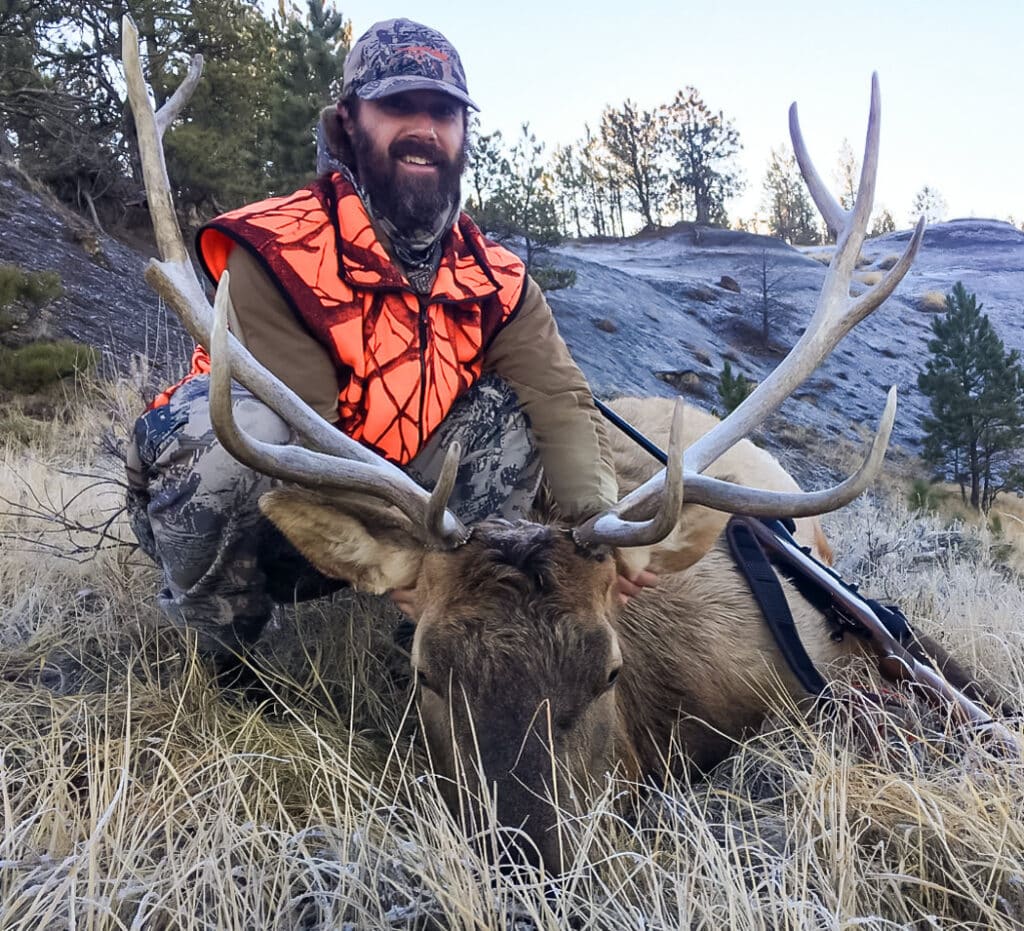Montana adopted the current Elk Management Plan (EMP) in 2005 — 18 years ago! A lot has changed in that time. Land ownership is changing from the family farmer and rancher as people flock to Montana, and our elk population has grown while an increasing number of elk select private lands, largely in response to hunter pressure. Wildlife managers are facing the challenge of accommodating hunters while addressing the worries of landowners losing livestock forage, crops and fences to elk.
The recently released draft EMP from FWP is an extensive document, spanning over 500 pages, with another 100-plus page Environmental Assessment. That’s an amazing amount of detail for a management plan, but don’t be intimidated by the size!
We’ve included our comments on the EMP that we sent to Montana Fish, Wildlife, and Parks here: MWF EMP comments 2023, and are including a summary below to help you better understand what’s being proposed in the EMP and it’s implications.
Prior to submitting these comments, MWF attended meetings in every region of the state. Every bit of commentary from the public helped during this period, and your voice and advocacy helped create a better EMP.
Although FWP could improve some aspects of the EMP, the overall plan, alongside the Environmental Assessment and recent season setting proposals from FWP, showcases movement focused on addressing some important issues relative to elk management.
We often say that “MWF shows up,” and this effort was no different. Our staff, board members, ambassadors and membership attended over 40 meetings last year in all seven regions to help inform, weigh and analyze public perception across the state. That advocacy shined through. Thank you for showing up!
In the draft EMP, FWP notably acknowledges the need for regular management strategy reviews every five years. They’ve increased objectives substantially in many districts, and they’ve increased efforts to improve habitat on public and private land. These actions align closely with the long-standing recommendations made by the Montana Wildlife Federation since 2015 or even earlier.
The EMP also calls for more working groups, such as the Elkhorn Working Group and the Devil’s Kitchen, which have helped reduce conflict and improve management outcomes, while bringing Montanans together. The recognition that human pressure is a significant factor affecting problematic elk distribution is crucial in developing new season setting strategies designed to increase hunter success and reduce pressure on public lands, while encouraging pressure on private lands.
“It’s encouraging to see FWP take up so many ideas and thoughts that MWF board members, affiliates and members have put forward,” said Jeff Lukas, Acting Conservation Director for the Montana Wildlife Federation who manages the organization’s elk campaign. “MWF has spent the last two years working to bring people together who traditionally disagreed on wildlife management issues. That effort paid off during the legislative session and it’s paying off in the new draft of the EMP. While it’s not perfect, it is a big step forward in helping Montanans work together to find the right outcomes on elk management.”
It is also heartening to see a call for enhanced hunter education programs to ensure that Montana puts ethical hunters in the field who understand wildlife conservation.
Despite the progressive aspects of the EMP, we also have some concerns. Specifically, we are concerned about the proposal on page 56 to eliminate limited entry permits in favor of general hunting in over-objective areas could lead to a spike in hunter pressure, further exacerbating the issue of problematic elk distribution. Notably, FWP acknowledges that such an action would increase hunter pressure on page 43 of the same plan.
“Page 56 of the revised EMP seems to work against common sense,” said Craig Jourdonnais, former FWP biologist and co-chairman of the Ravalli County Fish and Wildlife Association’s Big Game Committee.
“FWP outlines a management strategy for HDs that are substantially over the population objective for three consecutive years or more. First, it’s likely the population is far over objective because of chronic hunter/elk distribution issues in that HD (think about page 55 in the current EMP). Offering more bull elk hunting opportunities is a benefit to some hunters, and landowners engaging in commercial outfitting or charging a trespass fee, but it doesn’t address the overpopulation issue.”
We’re also concerned about the absence of certain provisions, such as one found on page 55 of the previous EMP, which allowed for not counting elk on inaccessible private land. In the past, this provision has helped guide FWP’s decisions to move to cow-only hunting in certain districts. FWP has only used this provision twice in the 18 years the plan was in place, but its use led to increased harvest rates and reduced conflict.
“The basic strategies for managing an elk herd aren’t complex,” Jourdonnais said.
“When managers need to reduce a population, they liberalize the harvest opportunities for antlerless elk. Antlerless harvest is the main driver for population management. Managers may certainly increase harvest opportunities for bull elk too, but harvesting more bull elk alone isn’t an effective long-term solution to population management. Page 55 of the old EMP gave us the tools to manage antlerless harvest in a manner that actually achieved the goals relative to herd population size and protected elk on accessible lands from over harvest. It’s baffling why it isn’t in the new EMP.”
The EMP also lacks updated scientific research on the impact of summer recreation on cow and calf elk during crucial times of the year, as stakeholders highlight the need for updated scientific research to inform decisions on elk management during crucial periods of the year.
Throughout the plan’s development, FWP has sought public input through a massive effort including over 40 stakeholder meetings and two elk advisory committees, demonstrating the agency’s commitment to listening to Montanans. However, the veto of a widely supported, bipartisan bill, SB 442, would have allowed the agency to delve deeper into the habitat issue across land ownerships.
As Montana’s EMP undergoes public scrutiny and potential revisions, it remains to be seen how the state will strike the delicate balance between managing elk populations while addressing hunters’ and stakeholders’ concerns. FWP is currently reviewing public comment before the next version of the plan is released late this summer or early this fall. Sign up for our email updates to keep abreast of the latest developments with elk management.

